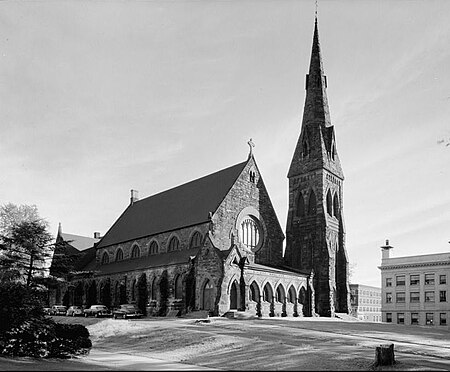Church of the Unity
1869 establishments in MassachusettsBuildings and structures demolished in 1961Churches completed in 1869Churches in Springfield, MassachusettsDemolished buildings and structures in Massachusetts ... and 3 more
Henry Hobson Richardson church buildingsUnitarian Universalist churches in MassachusettsUse mdy dates from April 2023

The Church of the Unity was a church building designed by H. H. Richardson and built in Springfield, Massachusetts in 1866. It housed the Third Congregational Society, a Unitarian congregation founded in 1819 (although they were referred to as the Church of the Unity during their residence in the building). It was demolished in 1961.
Excerpt from the Wikipedia article Church of the Unity (License: CC BY-SA 3.0, Authors, Images).Church of the Unity
Temple Street, Springfield
Geographical coordinates (GPS) Address Nearby Places Show on map
Geographical coordinates (GPS)
| Latitude | Longitude |
|---|---|
| N 42.103 ° | E -72.584 ° |
Address
Museum Parking
Temple Street
01105 Springfield
Massachusetts, United States
Open on Google Maps









